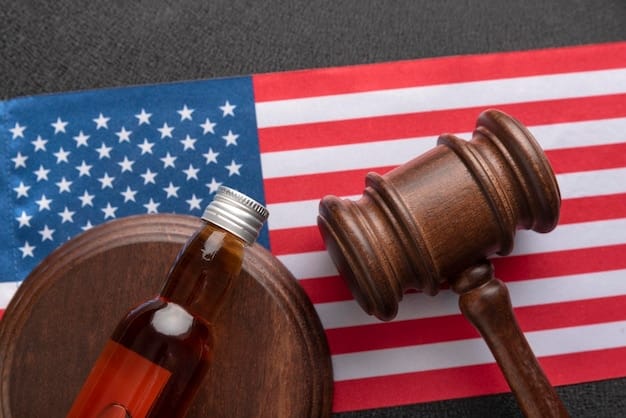National Student Loan Forgiveness Program Update: What’s New?

Breaking: National Student Loan Forgiveness Program Update: The Biden administration’s student loan forgiveness program faces ongoing legal challenges and adjustments, potentially impacting millions of borrowers; understanding the latest updates and alternative repayment options is crucial.
The landscape of student loan forgiveness is constantly evolving, and staying informed is crucial. The Breaking: National Student Loan Forgiveness Program Update brings both challenges and opportunities for borrowers.
Understanding the Current Status of Student Loan Forgiveness
The promise of student loan forgiveness has been a significant point of discussion. Let’s take a look at the current status of the forgiveness program.
The Biden administration’s initial plan for widespread student loan forgiveness faced legal challenges, leading to a temporary halt. The Supreme Court ultimately struck down the original plan. However, the administration has since proposed alternative routes and adjustments.
The Supreme Court Decision
The Supreme Court’s decision was a setback for many borrowers. The court cited concerns about the scope of the executive branch’s authority to implement such a large-scale program without explicit congressional approval.
The Revised Forgiveness Plan
In response to the Supreme Court’s decision, the Biden administration has been exploring alternative avenues for student loan relief. These include using existing regulatory authority under the Higher Education Act.
- Evaluate eligibility requirements.
- Understand application processes.
- Stay informed about potential legal challenges.

The revised plan aims to provide targeted relief to borrowers most in need, focusing on those with lower incomes or significant financial hardships. It also aims to simplify the application process and make it easier for borrowers to qualify.
The SAVE Plan: A New Path for Repayment
The Saving on a Valuable Education (SAVE) plan is an income-driven repayment plan designed to make student loan payments more affordable. Let’s explore the advantages of the SAVE plan.
The SAVE plan replaces the previous REPAYE plan and offers more favorable terms for many borrowers. It calculates payments based on income and family size, ensuring that payments are manageable.
Eligibility and Enrollment
Most federal student loan borrowers are eligible for the SAVE plan. Enrollment involves submitting an application and providing income information.
Benefits of the SAVE Plan
The SAVE plan offers several key benefits, including lower monthly payments, interest subsidies, and potential loan forgiveness after a specified period.
- Reduced monthly payments based on income.
- Interest subsidies to prevent loan balances from growing.
- Loan forgiveness after 20 or 25 years of qualifying payments.
The SAVE plan can significantly reduce the financial burden of student loan repayment. For some borrowers, monthly payments could be as low as zero dollars.
Other Income-Driven Repayment (IDR) Plans
Besides the SAVE plan, several other income-driven repayment plans are available. Let’s compare them briefly.
Income-driven repayment plans adjust monthly payments based on income and family size. They offer a safety net for borrowers who might struggle to afford standard repayment plans.
IBR, PAYE, and REPAYE
Income-Based Repayment (IBR), Pay As You Earn (PAYE), and Revised Pay As You Earn (REPAYE) are other IDR options. Each has its own eligibility requirements and repayment terms.
Comparing IDR Plans
When comparing IDR plans, consider factors such as payment amounts, loan forgiveness timelines, and eligibility criteria. Each plan suits different financial situations.

- Evaluate income and family size.
- Compare monthly payment amounts.
- Understand loan forgiveness timelines.
Borrowers should research and compare these plans to determine the best fit for their individual circumstances. The Department of Education provides resources to help borrowers make informed decisions.
Federal Student Loan Forgiveness Programs
Several federal programs offer student loan forgiveness for individuals in specific professions. Let’s explore the common options.
These programs target individuals working in public service, education, and healthcare, providing an incentive to enter and remain in these fields.
Public Service Loan Forgiveness (PSLF)
PSLF offers loan forgiveness to borrowers employed by qualifying public service organizations after 120 qualifying monthly payments.
Teacher Loan Forgiveness
Teacher Loan Forgiveness provides up to $17,500 in loan forgiveness to qualified teachers who serve in low-income schools for five consecutive years.
These programs can significantly reduce student loan debt for individuals dedicated to public service and education. They require meeting specific employment and eligibility criteria.
State-Sponsored Loan Forgiveness Programs
Many states offer their own student loan forgiveness programs. Let’s see how they work.
These programs are designed to address specific workforce needs within the state, often targeting healthcare professionals, teachers, and other essential workers.
Eligibility and Requirements
Eligibility for state-sponsored loan forgiveness programs varies by state and profession. Common requirements include working in a designated field and meeting specific residency criteria.
Examples of State Programs
California, New York, and Texas are examples of states with robust loan forgiveness programs. These programs offer loan repayment assistance to eligible professionals.
- Research state-specific programs.
- Check eligibility requirements.
- Understand application deadlines.
These programs can provide valuable financial assistance to individuals committed to working in high-need areas within their state.
Alternatives to Loan Forgiveness
Explore possibilities beyond traditional loan forgiveness programs. Let’s look at some useful alternatives.
Borrowers have options to manage their student loan debt, particularly for those who may not qualify for forgiveness programs or income-driven repayment plans.
Loan Consolidation
Loan consolidation combines multiple federal student loans into a single loan. This option can simplify repayment and potentially lower interest rates.
Refinancing
Refinancing involves taking out a new loan with a lower interest rate. It can be a useful strategy for borrowers with good credit.
- Evaluate credit scores.
- Compare interest rates.
- Understand refinancing terms.
These alternatives can provide immediate relief and long-term savings for borrowers struggling with student loan debt. It’s essential to evaluate the terms and conditions before committing to these options.
The Future of Student Loan Forgiveness
What can we expect in the long run? Let’s discuss the potential future of student loan forgiveness and repayment policies.
The landscape of student loan forgiveness remains uncertain, with ongoing debates about the role of government in addressing student debt. The future may bring new policies.
Political Factors
Political factors heavily influence policy decisions. Different administrations may prioritize different approaches to student loan debt.
Potential Reforms
Potential reforms could address the root causes of student debt, such as rising tuition costs and affordability challenges.
The future of student loan forgiveness will depend on the ongoing dialogue. Borrowers must stay informed and advocate for policies that support their financial well-being.
| Key Point | Brief Description |
|---|---|
| ⚖️ Supreme Court Decision | Original forgiveness plan was struck down. |
| 💰 SAVE Plan | Income-driven repayment plan with more favorable terms. |
| 🧑🏫 PSLF | Loan forgiveness for public service employees. |
| 🏦 Loan Refinancing | Potential to lower interest rates with a new loan. |
Frequently Asked Questions
▼
The original plan faced legal challenges and was struck down by the Supreme Court. The Biden administration is now pursuing alternative routes like the SAVE plan to provide relief.
▼
The SAVE plan calculates payments based on income and family size, potentially reducing monthly payments. It also offers interest subsidies and loan forgiveness after a set period.
▼
PSLF is available to borrowers employed by qualifying public service organizations who make 120 qualifying monthly payments under a qualifying repayment plan.
▼
Alternatives include loan consolidation, which simplifies repayment, and refinancing, which can lower interest rates for borrowers with good credit.
▼
Stay informed by regularly checking the Department of Education website. Also read trustworthy news sources to keep up to date with student loan updates.
Conclusion
Staying informed about the Breaking: National Student Loan Forgiveness Program Update, exploring alternative repayment options like the SAVE plan, and understanding the eligibility criteria for various forgiveness programs are crucial steps for borrowers navigating their student loan debt. While the landscape continues to evolve, proactive management and informed decision-making can lead to more manageable and financially sound outcomes.





